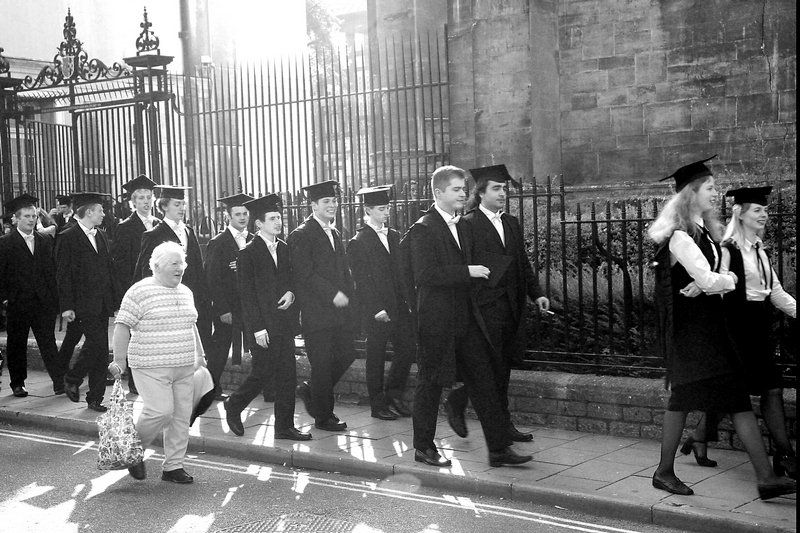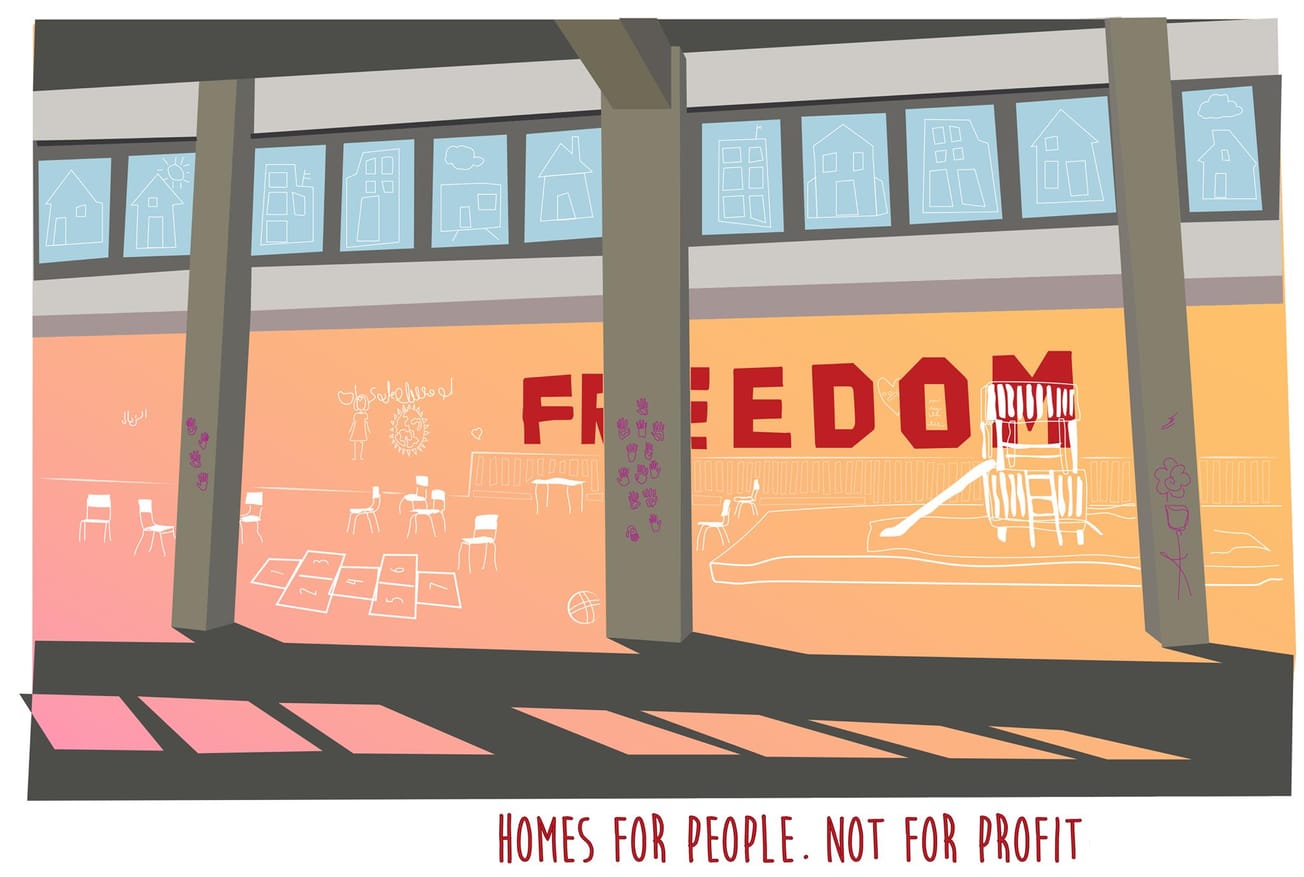By Niamh Rowe, Deputy Online Features Editor
'No matter how borderless their thinking, universities still remain civic institutions.' Niamh Rowe revisits the 'town and gown' stereotype, and asks: in modern times, what role should universities play in their local communities?
‘Town and gown’ conflicts are no recent phenomena amongst university towns. In 1355 a dispute in an Oxford tavern between scholars and locals escalated into a two-day battle, with townsfolk bearing crossbows against their bookish neigbours. Whilst the ‘town versus gown’ tensions may have evolved past the primitive warfare of wooden weaponry, the battle lines have become more obscure and the wounds more insidious. Universities can bring budding minds and the leaders of tomorrow into cities, but are these institutions isolating their own communities?
A 2018 study by the Civic University Commission found that only 58 percent of local residents were proud of their universities, and 35 percent were unable to name a single thing they had done to engage the community. In spite of these pessimistic findings, the relationship between universities and their local communities can undeniably be one of symbiotic gain. In Bristol, the university provides 13,300 jobs in the region and contributes £720m of economic value to the city. Equally, as the university’s ranking in national league tables has dropped in recent years due to lower student satisfaction scores, it is most likely that the city’s appealing nightlife, architecture and culture - Bristol was voted the best place to live in the UK in 2017 by The Sunday Times- have helped maintain high numbers of UCAS submissions.
This disengagement between universities and locals may be due to segregated student regions. Having been a Bristol student for two years I can confess that the parameters of my routine rarely extend beyond Redland, Clifton and Stokes Croft. Having high student populations around educational facilities, private housing and nightlife, is inevitable and in principle unproblematic. Though when mapping the wealth of student areas and their neighbors, this segregation becomes more unsettling. In Stoke Bishop the rate of income deprivation is just 1 percent, the lowest in the country. Simultaneously merely a few train stops away in Lawrence Hill the rate rockets to 36 percent, one of the highest nationwide. Whilst the university and students are not the cause of inequality in Bristol, it appears class segregation is occurring between our university and neighbouring Bristol regions. As ignorance is infamously blissful; if students are not seeing the inequality in Bristol, they may be less inclined to think about it.
However, dispersing student-enclaves of private housing across Bristol to enhance integration would not necessarily be a desirable solution. Expanding privately rented HMOs (houses of multiple occupation) into poorer areas would cause the ‘studentification’ of an already saturated housing market. Nonetheless, the student population of the university is growing. Between 2010 and 2015, Bristol undergraduates increased by roughly 33 percent. Rising tuition fees mean universities are becoming increasingly commercialised as students are viewed for their rising monetary value. In the university’s new Temple Quarter Campus opening in 2021/22 for an additional 5000 students, only 1,188 new bedrooms are planned, putting future strain on Bristol’s housing stock, further inflating rent for locals, academics and students, a shared grievance to perhaps unite the communities.
Bristol's new £300m campus set to transform Temple Quarter https://t.co/eNwZCCz3qE #highered #education #bristol pic.twitter.com/fXLLjmJ56Z
— University Business (@UB_UK) November 29, 2016
Currently ‘The Bristol Scholars’ scheme from the university appears to be a unifying force. Identifying promising students from under-performing local schools, the scheme provides free tutoring and a guaranteed tailored offer. There could be an argument for also extending the campus to these students. With the emergence of recorded lectures, lecture theatres are increasingly left half-empty, especially in first year. This digitisation of face-to-face academic contact could make online resources easily shared with our neighbors. It is difficult to justify the concentration of unutilised academic expertise existing alongside Southern Bristol, where the percentage of young people going onto higher education is just 17.5 percent, less than half the UK average.

Featured Image: Unsplash / Ross Sneddon
Yet, on the other hand, universities are businesses offering a service to their customers: students. Community integration and inequality should remain the focus of government bodies, as social fragmentation in Bristol is reflective of national problems in need of national solutions. In the past 10 years university staff have seen their wages fall by 19 percent in real terms, making the fusion of lecturer and local politician a tenuous proposition. However, in 2017 universities pocketed £2.2billion surplus from tuition fees, with the vice-chancellor of Bath Spa University earning over £800,000, more than 35 times the average local worker. Indeed, it is unreasonable to expect academics who often work 48-hour weeks with no paid overtime to be responsible for improving local education, yet in light of this surplus and internal wage discrepancy, local community outreach may need to be revised from altruistic to expected.
Why are Sanctuary Scholarships needed? Watch the story of one of our students and her journey to Bristol here...https://t.co/1DHqJkUTDU
— Sanctuary Scholarships - University of Bristol (@SancScholsBris) 19 April 2018
I spoke to Amy Leigh-Hatton, head of Bristol’s STAR society that supports local refugees and asylum seekers, the majority of whom are Somalians living in nearby Lawrence Hill. Amy relayed how this community only interacts with the university when student volunteers enter their community. Despite the benefits of this scheme, we are 'also in danger of peroetuating the divide due to the ‘white savior’ stereotype in reinforces’, and the focus should be on ‘bringing the community together rather than just us supporting them’, especially since students are short-term and seasonal Bristolians, inevitably intermittent with their commitment. The university has invested in the ‘Sanctuary Scholars Scheme’ for students who are unable to receive funding from the government.Yet Amy noted how recipients have found the application process inaccessible, calling into question the scheme’s primary function: supporting communities or creating the façade of corporate social responsibility? Amy advocates the university appointing a contact specifically to work with prospective refugee and asylum seeker employees and students, ‘humanising them, utilising them as local talent rather than just viewing them as victims of trauma’.
No matter how borderless their thinking, universities still remain civic institutions. They should arguably ensure engagement with a cross-section of their cities to provide a holistic education for students. If not, Bristol students – 35.5% of whom are privately educated – may broaden their intellect, but simultaneously reduce their horizons to the view of turrets and cobbled streets from the ASS' top floor. Deprivation hidden beneath an idyllic landscape. Yet, as British universities compete to stay relevant in global rankings, and foreign students become increasingly attractive due to their higher fees, it is likely that calls to ‘love thy neighbor’ may be a weak rallying cry in budgeting meetings.
Featured Image: TrekEarth / Eugene Gorny
Bristol STAR's Facebook can be found here.
Epigram's Facebook can be found here.








